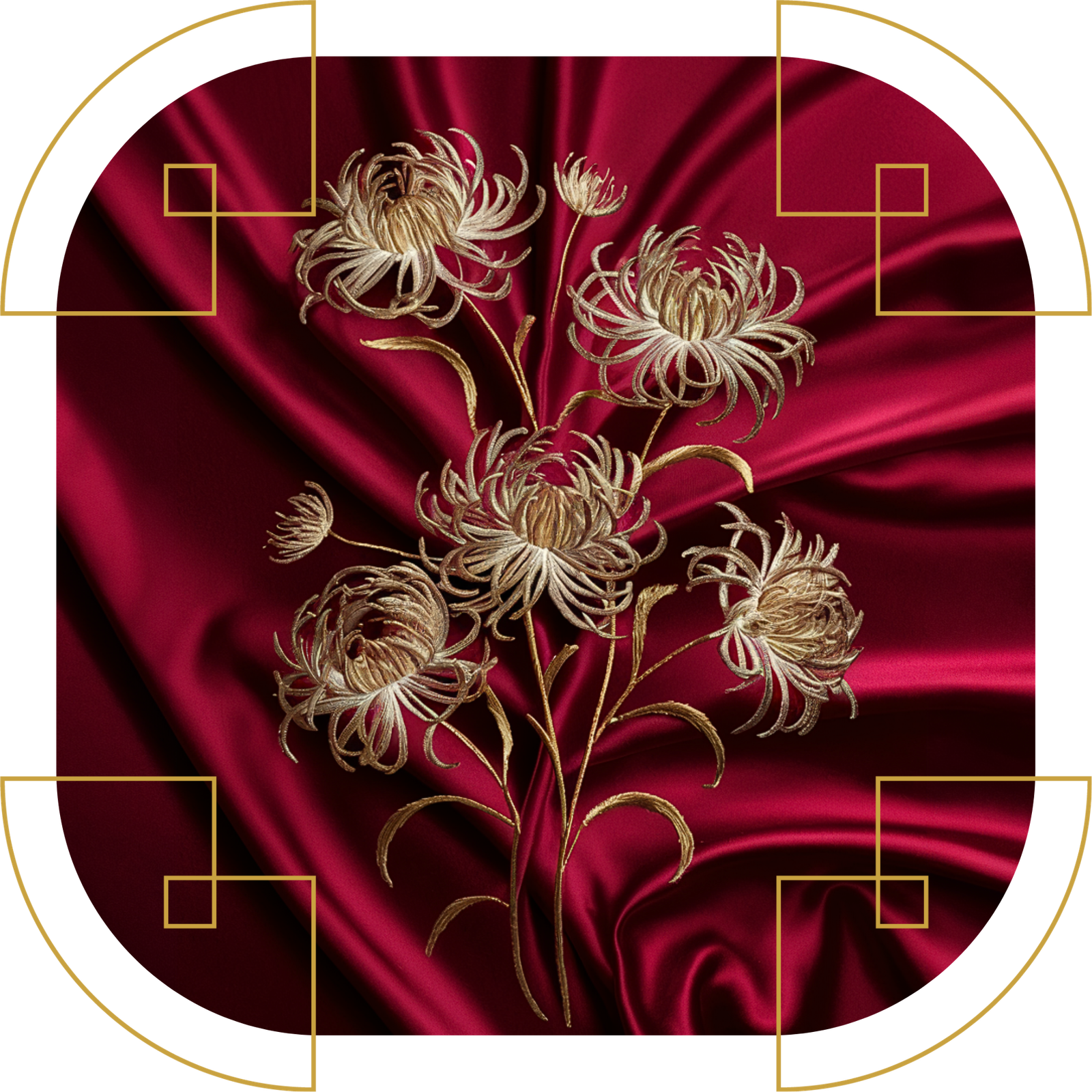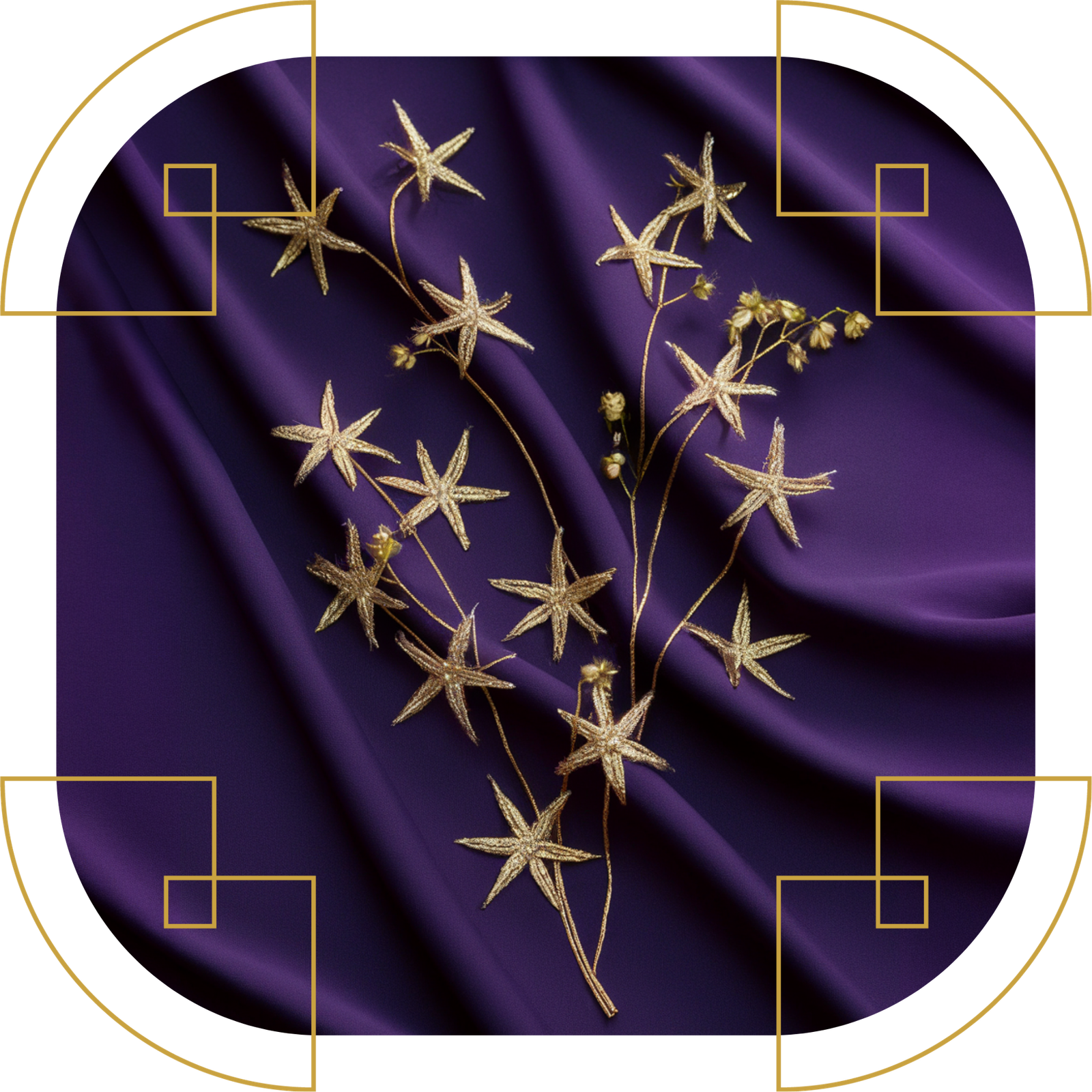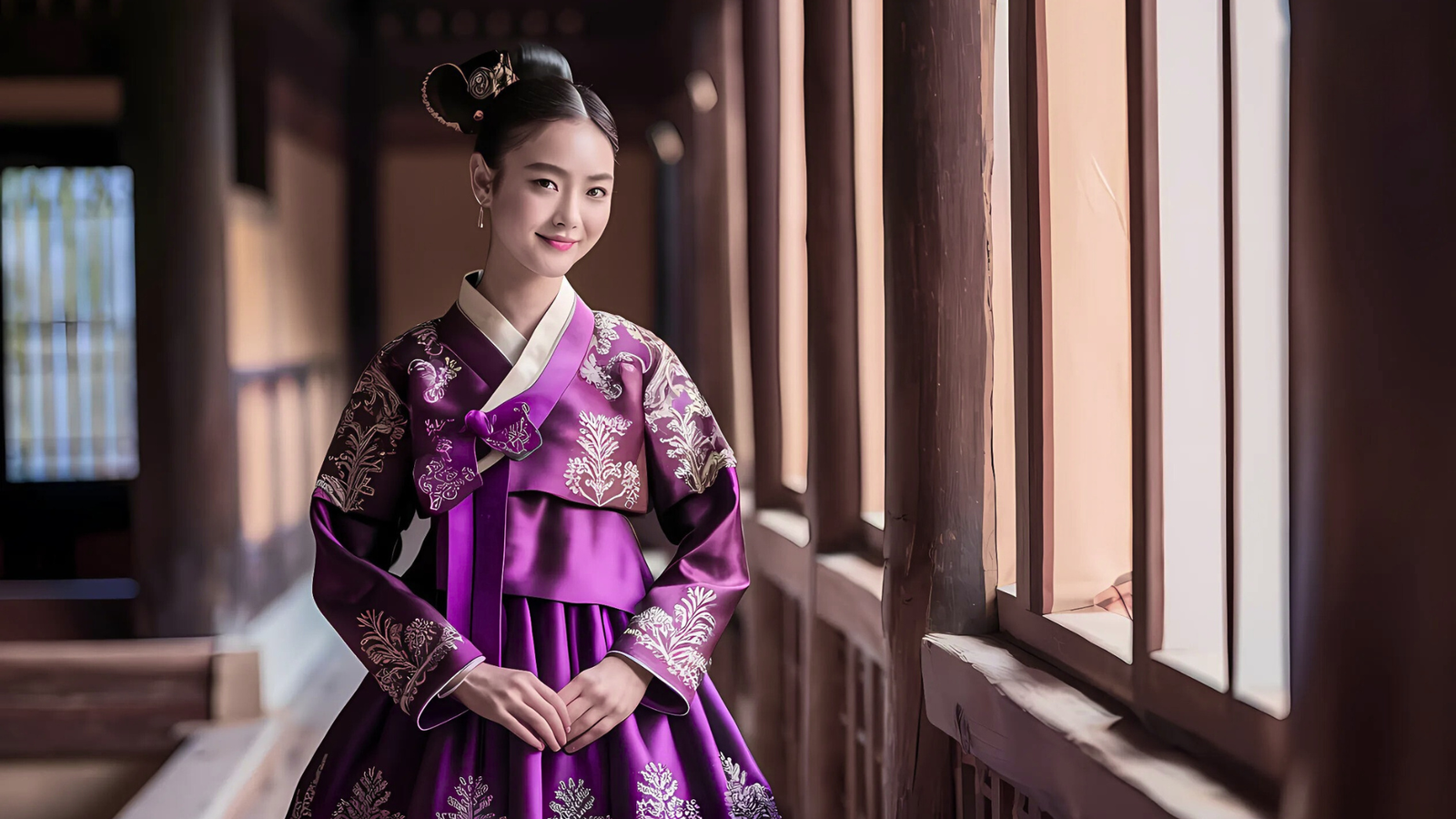3 Hidden Winter Flowers in Hanbok Design
The practice of incorporating winter flowers in hanbok design reached its highest sophistication during the Joseon Dynasty (1392-1910). From plum blossoms to mountain camellias, women in the royal court had four traditional winter floral motifs to choose from. These traditional floral patterns formed the cornerstone of women’s hanbok aesthetics across all seasons and occasions. Beyond these common designs, three rare flowers – winter chrysanthemums, winter jasmine, and wintersweet – were reserved exclusively for women of the highest ranks, prized for their scarcity and symbolic power.
Royal Winter Flowers in Hanbok Design: The Chrysanthemum

Winter chrysanthemums carried deeper meaning than their autumn counterparts, representing the refined grace that flourishes in adversity. Reserved exclusively for the queen’s ceremonial robe (jeogui) and the princess’s formal attire (wonsam), these motifs marked the highest positions in the royal hierarchy. So intricate were their patterns that only three royal embroiderers were qualified to create them, using specialized techniques passed down through generations. These distinctive embroidery methods exemplified hanbok’s artistic legacy. The winter chrysanthemum’s distinctive curved petals required meticulous silk thread layering, often taking months to complete a single design. These motifs were strategically placed on the shoulders and chest panels of ceremonial robes, creating a sense of movement as the wearer walked.
Court Winter Flowers in Hanbok Design: The Jasmine

The winter jasmine, with its yellow petals defying snow, symbolized hidden nobility in Korean court culture. Unlike the bold plum blossoms, these subtle blooms were embroidered exclusively on the robes of sanggung, the highest-ranking court ladies. These rarities grew only in carefully tended palace gardens, where skilled gardeners nurtured them through Korea’s harsh winters. The embroidery technique for winter jasmine required precise placement rules – each flower had to face slightly upward, suggesting aspiration and dignity. The stems were rendered in fine gold thread, while the petals utilized a unique combination of white and pale yellow silk threads to capture the flower’s delicate translucency.
Noble Winter Flowers in Hanbok Design: The Wintersweet

As the third and last of the unique winter flowers in hanbok design, the wintersweet distinguished itself through a unique property – its fragrance intensified in colder temperatures. This coveted flower, grown in dedicated palace grounds, adorned the garments of naemyeongbu (court ladies of the senior third rank and above). The wintersweet pattern required a sophisticated white-on-white embroidery technique, creating subtle texture variations that caught light differently as the wearer moved. The motif typically appeared in clusters of five to seven blooms, symbolizing the wearer’s elevated status. Modern hanbok designers occasionally reference this historical pattern in haute couture collections, though the complex technique remains challenging to reproduce.
According to the The Annals of the Joseon Dynasty (Joseon wangjo sillok), the court’s strict hierarchy divided approximately 600 palace women into senior and junior ranks. The senior ranks consisted of six levels, with 4-6 women holding positions at each level. The highest of these, the sanggung, managed crucial palace operations. Below them, 15-20 women occupied the senior third to first ranks, while the remaining hundreds served in nine junior ranks. These junior-ranked ladies typically wore simpler winter motifs like pine needles and bamboo leaves in their hanbok designs. This strict hierarchy influenced winter flowers in hanbok design, determining which motifs could appear on different ranks’ garments. While these exclusive patterns adorned ceremonial wear, winter hanbok encompassed many essential garments.
Tips to Understanding Noble Winter Flowers in Hanbok Design
| FLOWER | WINTER CHRYSANTHEMUM | WINTER JASMINE | WINTERSWEET | NOTABLE FEATURE | Most prestigious winter motif | Yellow petals that bloom through snow | Fragrance intensifies in cold | RANK PERMITTED | Queen, Crown Princess | Sanggung (highest-ranking court ladies) | Naemyeongbu (court ladies of senior third rank and above) | SEASON OF BLOOM | Late winter | Early to mid-winter | Mid-winter | SYMBOLIC MEANING | Refined grace in adversity | Hidden nobility | Inner strength and dignity | CULTIVATION | Required special heated pavilions; extremely rare | Grown in private palace gardens | Dedicated palace grounds | EMBROIDERY LEVEL | Most complex; only 3 royal embroiderers qualified | Intricate with specific placement rules | Complex white-on-white technique | GARMENT PLACEMENT | Ceremonial robes (jeogui), formal attire (wonsam) | Court attire for daily wear | Formal court attire | CONTEMPORARY USAGE | Reserved for wedding hanbok and museum reproductions; commonly featured in luxury textile designs | Popular in modern winter hanbok designs; often simplified for ready-to-wear collections | Rarely used in contemporary designs due to complexity; occasionally appears in haute couture hanbok |
|---|
The Enduring Legacy of Winter Flowers in Hanbok Design
The three hidden winter flowers in hanbok design represented the highest privileges in Joseon court fashion. Palace records reveal that high-ranking court ladies might serve for a decade or more before receiving permission to wear these prestigious motifs. The exclusivity of these designs went beyond mere decoration – specialized palace craftsmen devoted entire workshops to cultivating these rare blooms and developing the precise embroidery techniques needed to capture their essence.


Fun Fact: The winter jasmine’s placement on court robes was so precisely regulated that even a slight deviation in its position could reveal whether a garment was authentic or an imitation. Image number 1 shows the correct winter jasmine embroidery, while the the second image is incorrect. Can you spot the differences?

